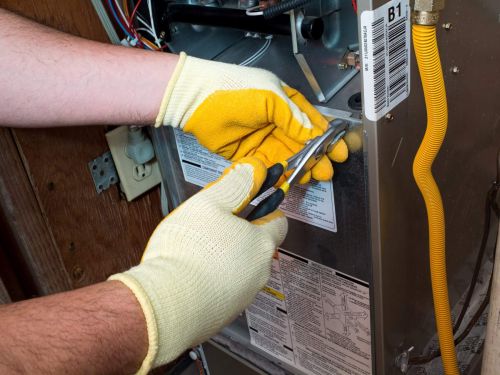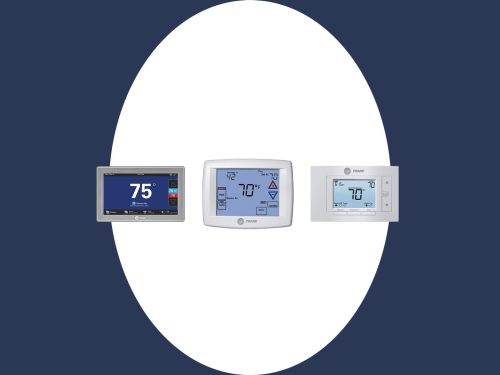When it’s the middle of summer in South Tampa, the last thing you want is for your air conditioning to stop working properly. One common issue that can quietly cause major problems is a clogged AC drain line. You may not notice it right away, but the signs will start to show as water builds up and your system struggles to keep your home cool and comfortable.
Ignoring this issue can lead to messy leaks, system shutdowns, or even damage to your home’s walls or ceilings. Knowing what this part of your AC system does, why it matters, and how to catch early red flags can save you time, money, and stress during peak cooling season.
Understanding the Role of the AC Drain Line
Every central AC system includes a drain line that helps manage built-up moisture. When your AC cools warm air, it also pulls humidity from your home. That water collects in a drain pan and travels outdoors through the condensate drain line. It’s a small but important part of the system that prevents water from pooling inside.
When the drain line gets blocked, the water has nowhere to go. This can result in water backing up into the system or leaking around the unit. Over time, this moisture causes damage to ceilings, walls, and even flooring. It can also lead to mold growth.
Keeping the drain line unclogged helps your AC stay efficient. Water buildup can trigger emergency shutdown features in modern systems, which create the false impression that you need a full repair. In reality, something as small as routine drain line clearing could be all that’s needed. Regular attention to this part of your system is one of the simpler ways to avoid bigger and more expensive AC failures.
Common Signs of a Clogged AC Drain Line
Most homeowners in South Tampa don’t think about the AC drain line until something goes wrong. By recognizing the symptoms early on, you can act before minor signs turn into costly repairs.
Here are some indicators that point to a blockage:
– Puddles or moisture around the indoor AC unit
– Musty or sour smells coming from air vents
– Unexpected AC shutdowns even when the thermostat is on
– A noticeable increase in indoor humidity levels
– Water stains on ceilings or nearby walls
Sometimes these issues are mistaken for other problems like a refrigerant leak or a failing thermostat. One homeowner thought the smell in their living room was from spoiled food, only to learn the drain line had been backed up for days. When the line was cleared, the odor faded within hours.
If you notice one or more of these signs, it’s best to act quickly. Letting the issue sit too long gives moisture the chance to seep into places it shouldn’t, weakening building materials and encouraging mold. Early intervention helps protect not just the system, but your home’s structure and your family’s air quality.
What Causes AC Drain Lines to Clog?
Clogs in your AC drain line usually form over time, not overnight. While this line has a pretty simple job carrying moisture out of your home, it can get blocked by more than one source. Understanding what causes these clogs can help you stay ahead of water damage and system issues during South Tampa’s long summer season.
Here are the most common reasons your drain line might clog:
1. Dirt and Dust Buildup
Air that flows through your HVAC system carries tiny particles of dust and debris. Over weeks or months, these particles can settle in the drain line and form a thick sludge that blocks water from draining.
2. Mold and Algae Growth
The inside of a drain line is cool and damp, which makes it a great place for mold and algae to grow. Once it starts, the buildup spreads and thickens, cutting off the normal flow of water.
3. Condensate Pump Failure
Homes with vertical AC units or those located in basements often depend on a pump to remove the water. If that pump fails, it can’t push the water out, which leads to pooling inside the system or backup down the line.
In South Tampa, where AC systems often run hard from late spring through early fall, any one of these causes can go unnoticed for a while. That’s why addressing clogs early before they affect the rest of the system is important for staying cool without complications.
Steps to Take When Your AC Drain Line Is Clogged
When signs of a clogged drain line show up, it’s important to act deliberately. Leaving it unresolved means more moisture inside your home, more stress on your AC system, and greater risk of part failure. The first step should always be safety. Start by turning off your AC system at the thermostat and breaker.
Here’s what to do next:
– Inspect for water damage around the indoor unit, especially on the floor or lower wall sections
– Avoid running the system again until you’ve had it looked at thoroughly
– Our professionals can clear the line using high-efficiency vacuums or line flushing tools, restoring proper flow and making sure nothing is missed
– If mold is found in the line or the tray, it may need cleaning with a medical-grade solution to keep spores from returning
– If your system uses a condensate pump, it may need to be repaired or replaced if it’s no longer moving water
Trying to fix this on your own without training can lead to cracked line fittings or even water ending up in unintended spots. Our technicians are trained to address clogs without damaging drain pans, coils, or insulation.
Preventive Measures to Keep Your AC Drain Line Clear
Most people don’t think about their drain line until there’s an issue. But a few changes to your seasonal routine can help stop most clog problems before they start. Especially in humid areas like South Tampa, prevention goes a long way.
Try these steps to lower the risk of future clogs:
– Schedule professional AC maintenance in South Tampa at least once a cooling season
– Ask about float switches. These simple devices turn your AC off when water backs up in the tray, helping stop overflow and giving you an early warning
– Keep the area around the indoor unit clean. Avoid stacking boxes, laundry, or household items too close, as they can limit airflow and contribute to dust buildup
– Make sure drain lines are secured and angled properly so water drains the way it should
– Avoid using bleach or boiling water in the line. These can damage fittings or PVC pipes many systems use
If you’ve had clogs before, taking extra care with routine inspections can be worth the effort. A clear drain line also means your home stays more comfortable, with no surprise moisture where it doesn’t belong.
Reliable AC Performance Starts With the Right Steps
Air conditioning problems often feel like they come out of nowhere. But in many situations, like with clogged drain lines, they build up quietly until they reach a tipping point. Taking time to notice the signs and understand what’s happening can prevent bigger issues from developing.
In South Tampa, summer puts a heavy demand on every part of your AC system. Making sure your drain line stays clear and your system is professionally maintained helps it run longer, cleaner, and with fewer interruptions. That means better comfort indoors and less worry through the hottest months.
Sunstate Mechanical Contractors, Inc. understands that preventing clogs and keeping your system running smoothly is essential for staying comfortable during the hot South Tampa summer, which is why regular AC maintenance in South Tampa plays a key role in improving efficiency and avoiding costly breakdowns. For a quick estimate or to book a service visit, please contact us today.
Latest Articles
Other Topics
- News (35)


